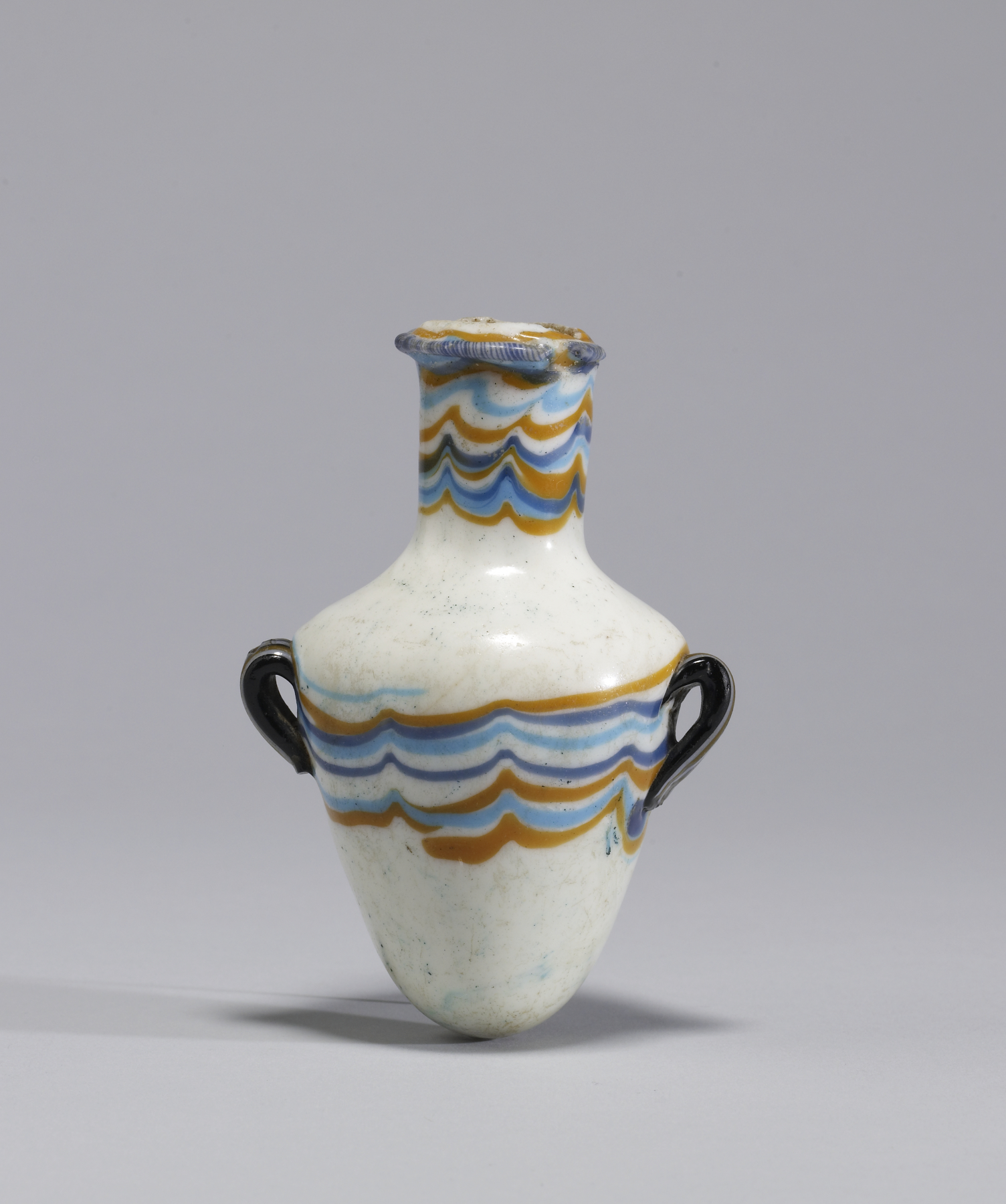Vessel with Handles
In addition to its use in jewelry, amulets, inlays, and architectural decoration, glass was used for vessels, particularly distinctively shaped perfume bottles. The two most common shapes take their names from Greek pottery: "amphoriskoi" (little amphoras) and "krateriskoi" (little kraters). This vessel is an example of the former, with its broad shoulders, rounded base, and opaque white ground. It is a core-formed vessel; the technology of blown glass was as of yet unknown. The molten mass, composed of silica and natron (heated to a temperature of around 1000°-1150° C) was wrapped around a clay or dung core that was later removed. Decorative bands were formed by pressing threads of colored glass onto the molten surface; combing the threads with a metal tool created decorative patterns.
Provenance
Provenance (from the French provenir, 'to come from/forth') is the chronology of the ownership, custody, or location of a historical object. Learn more about provenance at the Walters.
F. G. Hilton Price, Sale, London, 1908, p. 147, nol 1483 [illust.]; Dikran Kelekian, Paris and New York [date and mode of acquisition unknown]; Henry Walters, Baltimore, 1912, by purchase; Walters Art Museum, 1931, by bequest.
Exhibitions
| 1982 | 3000 Years of Glass: Treasures from The Walters Art Gallery. The Walters Art Gallery, Baltimore. |
Conservation
| Date | Description | Narrative |
|---|---|---|
| 3/1/1980 | Examination | examined for condition |
| 10/20/1998 | Examination | survey |
Geographies
Egypt, Western Thebes (Dra' Abu el-Naga') (Place of Origin)
Measurements
4 1/2 x 3 1/16 x 2 5/16 in. (11.4 x 7.8 x 5.9 cm)
Credit Line
Acquired by Henry Walters, 1912
Location in Museum
Accession Number
In libraries, galleries, museums, and archives, an accession number is a unique identifier assigned to each object in the collection.
In libraries, galleries, museums, and archives, an accession number is a unique identifier assigned to each object in the collection.
47.31


